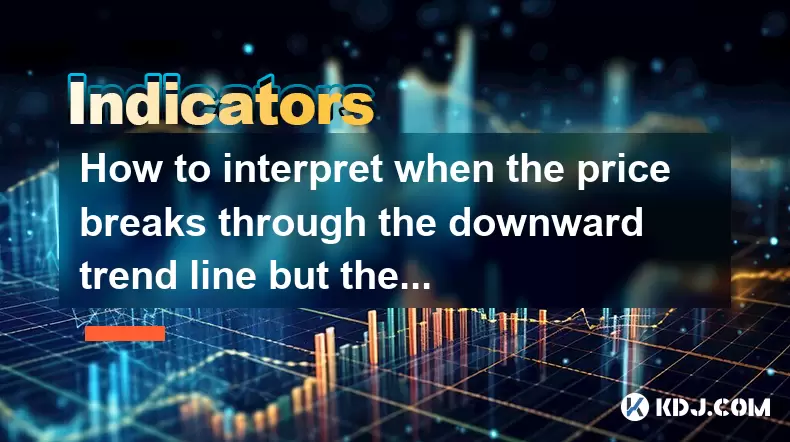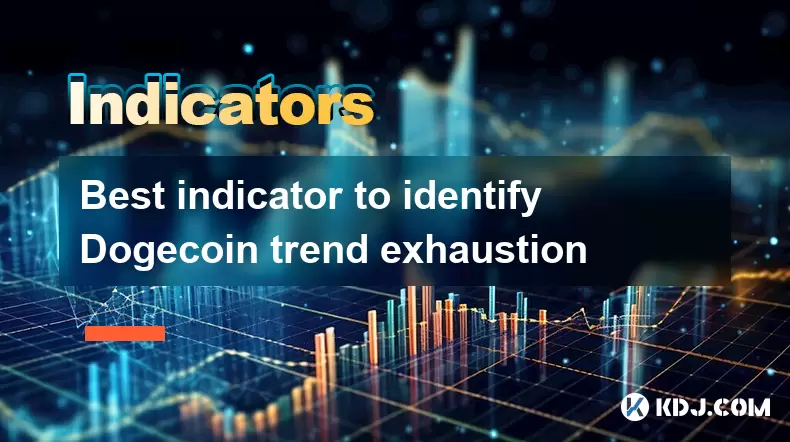-
 Bitcoin
Bitcoin $108,708.8110
0.60% -
 Ethereum
Ethereum $2,561.6057
1.91% -
 Tether USDt
Tether USDt $1.0001
-0.03% -
 XRP
XRP $2.2795
0.57% -
 BNB
BNB $662.2393
1.00% -
 Solana
Solana $153.1346
3.74% -
 USDC
USDC $1.0000
0.00% -
 TRON
TRON $0.2877
0.97% -
 Dogecoin
Dogecoin $0.1710
3.93% -
 Cardano
Cardano $0.5871
1.61% -
 Hyperliquid
Hyperliquid $39.6663
1.68% -
 Sui
Sui $2.9032
0.79% -
 Bitcoin Cash
Bitcoin Cash $496.1879
1.71% -
 Chainlink
Chainlink $13.5807
3.01% -
 UNUS SED LEO
UNUS SED LEO $9.0777
0.61% -
 Stellar
Stellar $0.2514
4.51% -
 Avalanche
Avalanche $18.1761
1.86% -
 Shiba Inu
Shiba Inu $0.0...01173
1.72% -
 Toncoin
Toncoin $2.8010
-4.23% -
 Hedera
Hedera $0.1594
3.21% -
 Litecoin
Litecoin $87.0257
-0.53% -
 Monero
Monero $319.1217
1.79% -
 Polkadot
Polkadot $3.3853
0.68% -
 Dai
Dai $0.9999
-0.01% -
 Ethena USDe
Ethena USDe $1.0003
0.02% -
 Bitget Token
Bitget Token $4.3420
-0.97% -
 Uniswap
Uniswap $7.3772
1.39% -
 Aave
Aave $286.6277
5.61% -
 Pepe
Pepe $0.0...09994
2.33% -
 Pi
Pi $0.4589
1.76%
How to interpret when the price breaks through the downward trend line but the MACD does not cross?
A breakout above a downtrend line in crypto may signal a potential reversal, but without MACD confirmation, traders should wait for added validation like volume spikes or retests before acting.
Jun 30, 2025 at 10:28 pm

Understanding the Downward Trend Line Breakout
When analyzing price action in cryptocurrency trading, a breakthrough of the downward trend line is often seen as a potential reversal signal. This occurs when the price moves above a previously established resistance formed by connecting lower highs on the chart. In many cases, traders interpret this as a sign that the downtrend may be ending and an uptrend could be starting.
However, the complexity arises when such a breakout does not align with other technical indicators — particularly the MACD (Moving Average Convergence Divergence) — which remains bearish or neutral. The key here lies in understanding what each indicator signifies and how they interact under different market conditions.
A trend line breakout suggests that buyers are gaining strength, but it doesn't guarantee momentum will follow.
Decoding the MACD Indicator Behavior
The MACD is a momentum oscillator used to identify changes in the strength, direction, and duration of a trend. It consists of two lines — the MACD line and the signal line — along with a histogram that shows the distance between them. A bullish crossover happens when the MACD line crosses above the signal line, indicating potential upward movement.
In the scenario described, even though the price breaks out of the downtrend, the MACD does not cross, suggesting that there's no clear shift in momentum yet. This divergence can confuse traders who rely solely on price action or technical indicators without considering context.
- Lagging nature of MACD: It may not react immediately to sudden price movements.
- Market sentiment vs actual momentum: Price might reflect optimism while volume and momentum lag behind.
Analyzing the Divergence Between Price and MACD
This situation represents a classic case of price-indicator divergence. While the price appears to suggest a reversal, the lack of confirmation from the MACD means traders should proceed cautiously. Such divergence often occurs during consolidation phases or fakeouts designed to trap retail traders.
To better understand this divergence, consider evaluating additional elements:
- Volume patterns: Was the breakout accompanied by increased volume? High volume can validate the breakout more than a low-volume move.
- Timeframe alignment: Check if higher timeframes (like 4H or daily) confirm the trend change.
- Historical behavior: How did similar breakouts perform in the past for that particular asset?
How to Approach Trading in This Scenario
Trading based on a single signal — especially when conflicting — increases risk. Here’s how you can approach this situation methodically:
- Wait for confirmation: Don’t enter immediately after the breakout; wait for a retest of the broken trendline as support.
- Observe price structure: Look for strong candlestick formations like engulfing bars or bullish reversals near the trendline.
- Use multiple timeframes: Analyze both higher and lower timeframes to filter false signals.
- Watch for MACD convergence: If the MACD begins to rise and approaches the signal line, it could indicate upcoming momentum.
Avoid making decisions based purely on one indicator or one price event. Instead, combine tools and observe whether other signs of strength emerge.
Alternative Indicators to Confirm or Challenge the Signal
If the MACD isn’t cooperating, it’s wise to look at other tools to get a clearer picture:
- RSI (Relative Strength Index): Is it moving out of oversold territory? That could signal buying pressure building up.
- Volume profile: Are large orders accumulating around the breakout zone?
- Order book analysis: For crypto traders, checking the order book can reveal hidden demand or supply zones.
- Fibonacci retracement levels: Does the breakout occur near a key Fibonacci level? That adds confluence.
These alternative tools help provide a broader view and may offer insights into whether the breakout has real substance or is just noise.
Frequently Asked Questions
Q: What does it mean if the price breaks a trend line but volume remains low?
It typically indicates weak conviction among buyers. Without strong volume backing the move, the breakout lacks sustainability and may result in a pullback.
Q: Should I ignore a breakout if the MACD hasn’t confirmed it?
Not necessarily. You shouldn’t ignore it, but you should treat it as a potential opportunity rather than a guaranteed trend reversal. Use filters like retests and volume before entering.
Q: Can the MACD eventually catch up after a price breakout?
Yes, the MACD is a lagging indicator, so it may take time to reflect momentum shifts. Watch for narrowing gaps between the MACD line and signal line as a possible early sign.
Q: Is this kind of divergence common in crypto markets?
Due to high volatility and speculative nature, divergences like these are quite frequent in crypto. Traders must remain cautious and avoid overreacting to isolated signals.
Disclaimer:info@kdj.com
The information provided is not trading advice. kdj.com does not assume any responsibility for any investments made based on the information provided in this article. Cryptocurrencies are highly volatile and it is highly recommended that you invest with caution after thorough research!
If you believe that the content used on this website infringes your copyright, please contact us immediately (info@kdj.com) and we will delete it promptly.
- Bitcoin Wallet Hack? Coinbase Exec Sounds the Alarm on $8B Whale Movement
- 2025-07-07 18:30:12
- Mercado Bitcoin, Tokenization, and XRP Ledger: A Latin American Power Play
- 2025-07-07 18:30:12
- XYZVerse, Wall Street, and the Crypto Upswing: What's the Deal?
- 2025-07-07 19:10:12
- AI, Web3, and Communities: Building the Future Together
- 2025-07-07 19:10:12
- AurealOne: A Promising Early-Stage Metaverse Project
- 2025-07-07 19:15:12
- Dogecoin Price: Crypto Market Analysis and the Musk Effect
- 2025-07-07 19:50:12
Related knowledge

How to trade Dogecoin based on funding rates and open interest
Jul 07,2025 at 02:49am
Understanding Funding Rates in Dogecoin TradingFunding rates are periodic payments made to either long or short traders depending on the prevailing market conditions. In perpetual futures contracts, these rates help align the price of the contract with the spot price of Dogecoin (DOGE). When funding rates are positive, it indicates that long positions p...

What is the 'God Mode' indicator for Bitcoincoin
Jul 07,2025 at 04:42pm
Understanding the 'God Mode' IndicatorThe 'God Mode' indicator is a term that has emerged within cryptocurrency trading communities, particularly those focused on meme coins like Dogecoin (DOGE). While not an officially recognized technical analysis tool or formula, it refers to a set of conditions or patterns in price action and volume that some trader...

How to spot manipulation on the Dogecoin chart
Jul 06,2025 at 12:35pm
Understanding the Basics of Chart ManipulationChart manipulation in the cryptocurrency space, particularly with Dogecoin, refers to artificial price movements caused by coordinated trading activities rather than genuine market demand. These manipulations are often executed by large holders (commonly known as whales) or organized groups aiming to mislead...

Bitcoincoin market structure break explained
Jul 07,2025 at 02:51am
Understanding the Dogecoin Market StructureDogecoin, initially created as a meme-based cryptocurrency, has evolved into a significant player in the crypto market. Its market structure refers to how price action is organized over time, including support and resistance levels, trend lines, and patterns that help traders anticipate future movements. A mark...

What is the significance of a Dogecoin engulfing candle pattern
Jul 06,2025 at 06:36am
Understanding the Engulfing Candle Pattern in CryptocurrencyThe engulfing candle pattern is a significant technical analysis tool used by traders to identify potential trend reversals in financial markets, including cryptocurrencies like Dogecoin. This pattern typically consists of two candles: the first one is relatively small and indicates the current...

Best indicator to identify Dogecoin trend exhaustion
Jul 07,2025 at 11:29am
Understanding Dogecoin Trend ExhaustionIdentifying trend exhaustion in Dogecoin (DOGE) is crucial for traders aiming to avoid late entries or potential reversals. Trend exhaustion occurs when a prevailing price movement loses momentum, often leading to a consolidation phase or reversal. In the volatile world of cryptocurrencies like Dogecoin, understand...

How to trade Dogecoin based on funding rates and open interest
Jul 07,2025 at 02:49am
Understanding Funding Rates in Dogecoin TradingFunding rates are periodic payments made to either long or short traders depending on the prevailing market conditions. In perpetual futures contracts, these rates help align the price of the contract with the spot price of Dogecoin (DOGE). When funding rates are positive, it indicates that long positions p...

What is the 'God Mode' indicator for Bitcoincoin
Jul 07,2025 at 04:42pm
Understanding the 'God Mode' IndicatorThe 'God Mode' indicator is a term that has emerged within cryptocurrency trading communities, particularly those focused on meme coins like Dogecoin (DOGE). While not an officially recognized technical analysis tool or formula, it refers to a set of conditions or patterns in price action and volume that some trader...

How to spot manipulation on the Dogecoin chart
Jul 06,2025 at 12:35pm
Understanding the Basics of Chart ManipulationChart manipulation in the cryptocurrency space, particularly with Dogecoin, refers to artificial price movements caused by coordinated trading activities rather than genuine market demand. These manipulations are often executed by large holders (commonly known as whales) or organized groups aiming to mislead...

Bitcoincoin market structure break explained
Jul 07,2025 at 02:51am
Understanding the Dogecoin Market StructureDogecoin, initially created as a meme-based cryptocurrency, has evolved into a significant player in the crypto market. Its market structure refers to how price action is organized over time, including support and resistance levels, trend lines, and patterns that help traders anticipate future movements. A mark...

What is the significance of a Dogecoin engulfing candle pattern
Jul 06,2025 at 06:36am
Understanding the Engulfing Candle Pattern in CryptocurrencyThe engulfing candle pattern is a significant technical analysis tool used by traders to identify potential trend reversals in financial markets, including cryptocurrencies like Dogecoin. This pattern typically consists of two candles: the first one is relatively small and indicates the current...

Best indicator to identify Dogecoin trend exhaustion
Jul 07,2025 at 11:29am
Understanding Dogecoin Trend ExhaustionIdentifying trend exhaustion in Dogecoin (DOGE) is crucial for traders aiming to avoid late entries or potential reversals. Trend exhaustion occurs when a prevailing price movement loses momentum, often leading to a consolidation phase or reversal. In the volatile world of cryptocurrencies like Dogecoin, understand...
See all articles

























































































